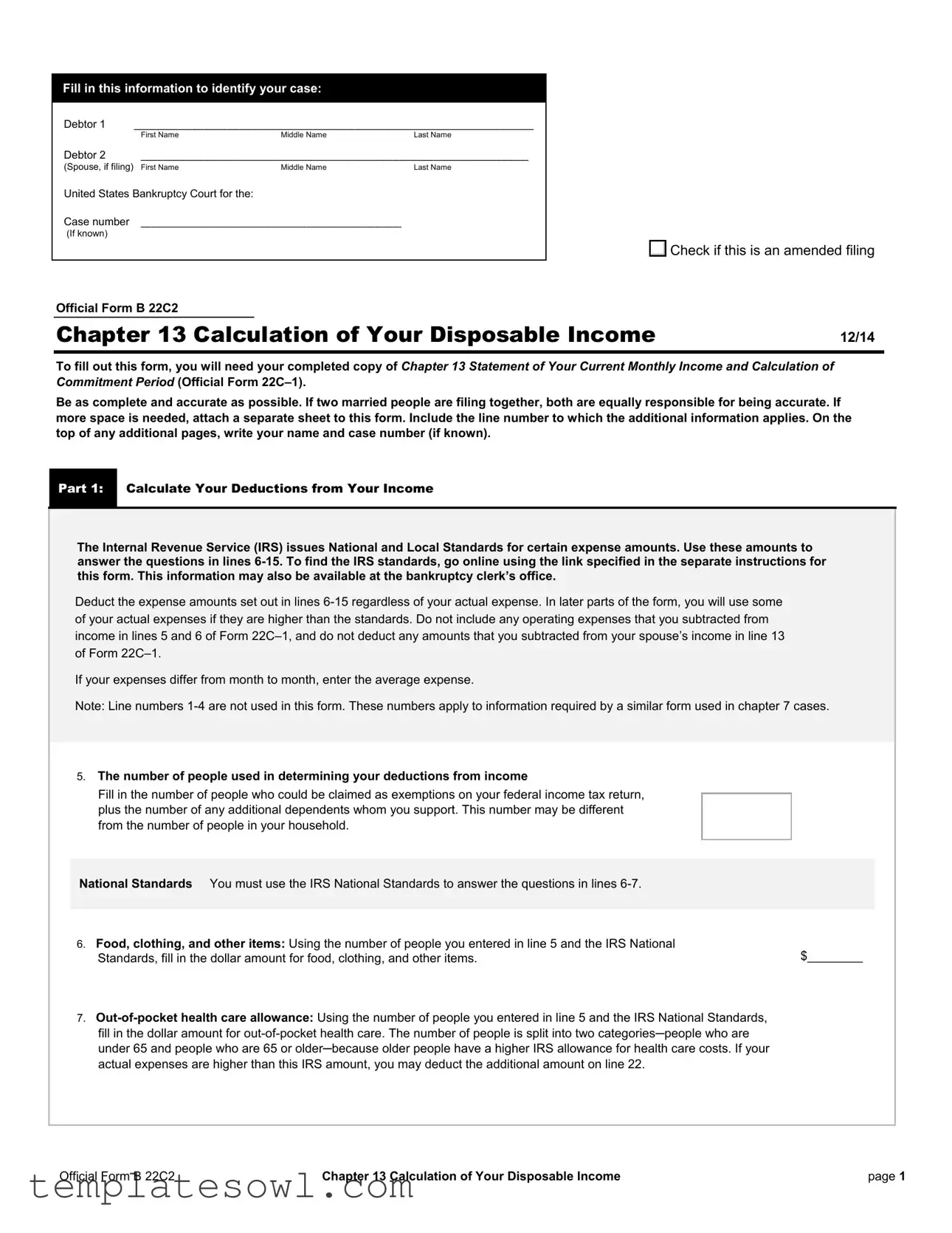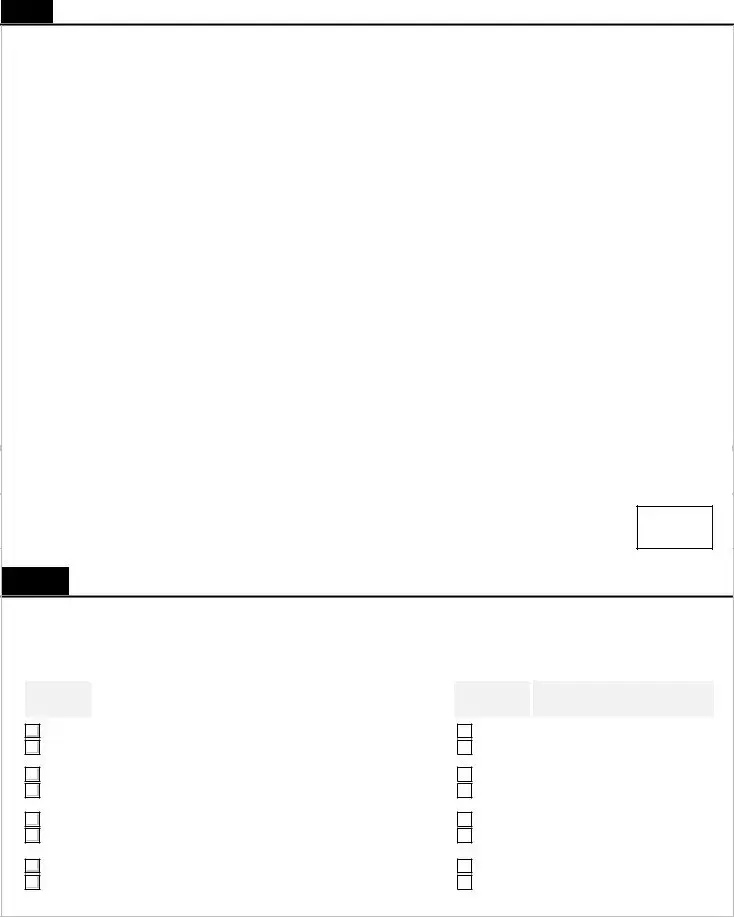Other Necessary |
In addition to the expense deductions listed above, you are allowed your monthly expenses for the |
Expenses |
following IRS categories. |
16.Taxes: The total monthly amount that you actually pay for federal, state and local taxes, such as income taxes, self- employment taxes, social security taxes, and Medicare taxes. You may include the monthly amount withheld from your pay for these taxes. However, if you expect to receive a tax refund, you must divide the expected refund by 12 and subtract that number from the total monthly amount that is withheld to pay for taxes.
Do not include real estate, sales, or use taxes.
17.Involuntary deductions: The total monthly payroll deductions that your job requires, such as retirement contributions, union dues, and uniform costs.
Do not include amounts that are not required by your job, such as voluntary 401(k) contributions or payroll savings.
18.Life insurance: The total monthly premiums that you pay for your own term life insurance. If two married people are filing together, include payments that you make for your spouse’s term life insurance.
Do not include premiums for life insurance on your dependents, for a non-filing spouse’s life insurance, or for any form of life insurance other than term.
19.Court-ordered payments: The total monthly amount that you pay as required by the order of a court or administrative agency, such as spousal or child support payments.
Do not include payments on past due obligations for spousal or child support. You will list these obligations in line 35.
20.Education: The total monthly amount that you pay for education that is either required:
as a condition for your job, or
for your physically or mentally challenged dependent child if no public education is available for similar services.
21.Childcare: The total monthly amount that you pay for childcare, such as babysitting, daycare, nursery, and preschool. Do not include payments for any elementary or secondary school education.
22.Additional health care expenses, excluding insurance costs: The monthly amount that you pay for health care that is required for the health and welfare of you or your dependents and that is not reimbursed by insurance or paid by a health savings account. Include only the amount that is more than the total entered in line 7.
Payments for health insurance or health savings accounts should be listed only in line 25.
23.Optional telephones and telephone services: The total monthly amount that you pay for telecommunication services for you and your dependents, such as pagers, call waiting, caller identification, special long distance, or business cell phone service, to the extent necessary for your health and welfare or that of your dependents or for the production of income, if it is not reimbursed by your employer.
Do not include payments for basic home telephone, internet or cell phone service. Do not include self-employment expenses, such as those reported on line 5 of Form 22C-1, or any amount you previously deducted.
24.Add all of the expenses allowed under the IRS expense allowances. Add lines 6 through 23.
Additional Expense |
These are additional deductions allowed by the Means Test. |
Deductions |
Note: Do not include any expense allowances listed in lines 6-24. |
|



 Check if this is an amended filing
Check if this is an amended filing





